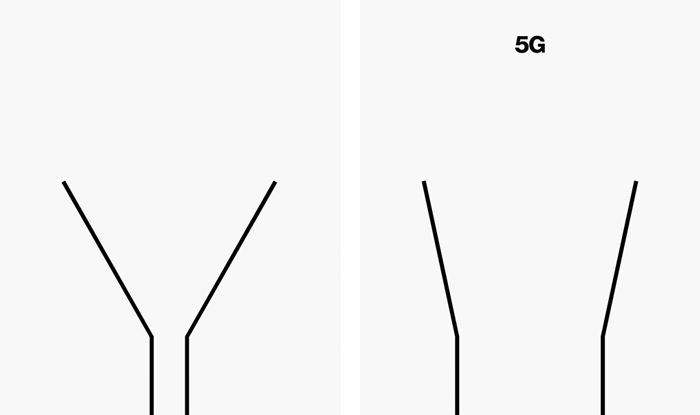Full Transparency
Our editorial transparency tool uses blockchain technology to permanently log all changes made to official releases after publication. However, this post is not an official release and therefore not tracked. Visit our learn more for more information.
The fifth generation of wireless network technology has the potential to usher in a Fourth Industrial Revolution. But how does it work? For an answer, it’s helpful to first look at how cellular networks have evolved over the years, and how 5G not only builds on that foundation, but stakes out new ground.
How cell data travels today
Data travels along the radio portion of the electromagnetic spectrum, which includes frequencies between 3 kilohertz (kHz) and 300 gigahertz (GHz). The first four generations of cellular network technology operated on specific parts of the spectrum: 1G (frequency bands between 850 MHz and 1,900 MHz), 2G and 3G (expanded to 850 MHz to 2,100 MHz), and 4G (roughly 600 MHz to 2.5 GHz).
Why does this all matter? In a word, speed.
The transition from analog signals to digital ones, combined with higher frequency bands, dramatically increased the speed at which data can download. Whereas the top download speed of data on a 1G network reached around 2.4kbps, 2G could get to 50kbps, and 3G checked in at 2mbps on stationary devices and 384kbps on devices in cars or other moving vehicles. The fourth generation of wireless connectivity, 4G, which debuted in the 2000s and created the backbone for many of today’s most disruptive innovations, is up to 500 times faster than 3G, with speeds of 100mbps for stationary objects and 10 mbps for moving ones.

That may be fast, but it pales in comparison to the potential speeds of 5G. Verizon 5G Ultra Wideband, now available in parts of 35 cities nationwide and counting, is the next name in fast. 5G Ultra Wideband can carry a remarkably higher volume of data than is possible on today’s LTE networks, and that bandwidth is critical for tomorrow’s most innovative technologies to take flight.
What does it mean for consumers? The low latency of a 5G network—that is, the time required for a packet of data to travel between two points—can dramatically alter how people interact with data. And that’s increasingly necessary in a world where billions of devices will be coming online in the next few years.
Combined, low latency and high bandwidth allow for faster upload and download speeds, opening up a wide range of potential benefits: people streaming 4K video in seconds, essentially seamless VR experiences, advances in remote medicine, the prospect of adjusting traffic flow in real time, and more.
The potential of 5G is limited only by an innovator’s imagination.
How does 5G technology work?
Verizon is provisioning its 5G Ultra Wideband network with several components, including fiber-optic cable, small cells and extensive radio wave spectrum holdings. A critical component of Verizon’s spectrum holdings is called millimeter wave spectrum, which refers to high frequency bands—specifically, those in the 28 GHz to 38 GHz range. It is in these spectrum bands that tomorrow’s most audacious, latency-sensitive and bandwidth-intensive innovations will rely. Think of millimeter wave spectrum as the widest, fastest highway on the planet, with millions of trucks traveling centimeters apart from one another at unbelievable speeds—smoothly.

The latency piece cannot be understated. Current 4G networks display latency and the 30-150 milliseconds. 5G Ultra Wideband customers should expect latency to eventually drop below 10 milliseconds.
Two critical components of Verizon’s 5G buildout are small cells and the fiber-optic cable. Small cells are transmitters, roughly the size of a laptop computer, which are strategically placed in locations where usage demands are highest—such as downtown areas, shopping centers, sports venues, and college campuses.
Fiber-optic cables contain dozens to hundreds of optical fibers within a single casing, transferring data signals from the small cells to the core network at the speed of light. Massive amounts of data can travel hundreds of miles at blazing fast gigabit speeds, with super low single-digit millisecond latency—and Verizon is the first carrier in the industry to advance this fiber technology to a long-haul scenario.
The future will be defined by the movement of data. An estimated 20.4 billion devices—whether VR goggles, cloud gaming systems, IoT sensors or self-driving vehicles— are expected to be online by 2020, and all will be making heavy data demands on the network. 5G can not only make these data-intensive applicationsviable, but it has the potential to alter the very way data shapes our world.
Learn more about what 5G is, and how Verizon 5G Ultra Wideband is the fastest 5G in the World.